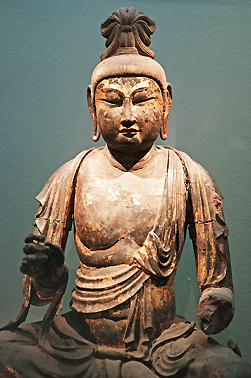
It was Mami Kataoka’s idea to show everything I created in one exhibition. I wanted to show all my work and this marks the first extensive collection of all my work. The space was very big so it was good to show everything-my whole artistic life, from painting from when I was just five years old until now.

The pieces displayed for this exhibition range from old ones to newer ones, why did you choose to combine the two? Because of that, I put this kind of feeling in the title, The Soul Trembles. During this time, I was thinking a lot about life and death, questions like “If my body would die, where is my soul going?”.

When I was invited to create this show, I was very happy but while I was preparing for it, my doctor told me that my cancer returned so I had to do an operation and chemotherapy. Mami Kataoka, the director of Mori Art Museum, curated the show and we wanted to show the past 25 years of my work as an artist in one exhibition. It became a touring exhibition and since then, has been to South Korea and now Taipei. Over 600,000 people visited the exhibition. This exhibition was first shown at the Mori Art Museum in Tokyo, Japan. See also: Photographer Daido Moriyama And ‘Provoke’ Exhibition Curators Discuss The Magazine’s Lasting Influence On Japanese PhotographyĬan you tell us more about your Shiota Chiharu: The Soul Trembles exhibition in Taipei? Tatler Hong Kong speaks to Chiharu about the exhibition, her iconic threads and how her work has changed over the years. Now she’s bringing both new and old artworks to a new exhibition at Taipei Fine Arts Museum, which runs until August 28. For almost three decades of her career, Shiota has exhibited her work at more than 300 solo shows, exhibitions, biennales and other events. She moved to Germany and subsequently studied with various performance art pioneers from Marina Abramovic to Rebecca Horn and has since stayed in Berlin. This personal creative practice was honed by her colourful life experiences, studying oil painting during university in Japan and then moving to Australia where she began making performances and installations. The Osaka-born, Berlin-based artist confronts fundamental human concerns such as life, death and relationships and explores human existence throughout various dimensions by creating existence in the absence. The artist behind the iconic motif is Chiharu Shiota, a name that people quickly took note of. Her large installations of webs of threads wrapped around objects took the art world by storm.


 0 kommentar(er)
0 kommentar(er)
